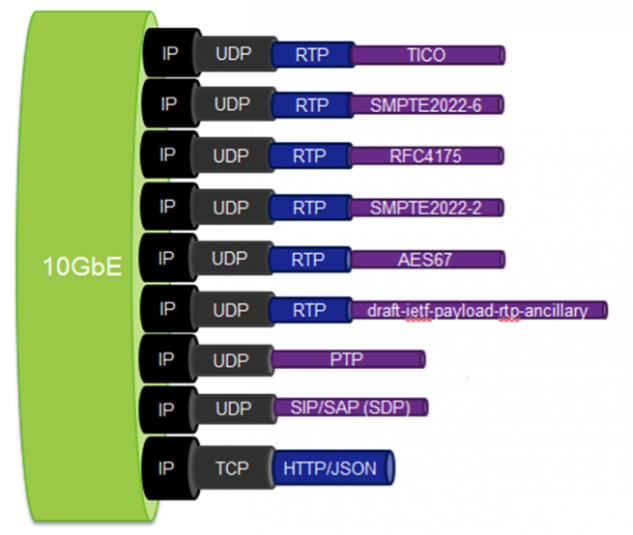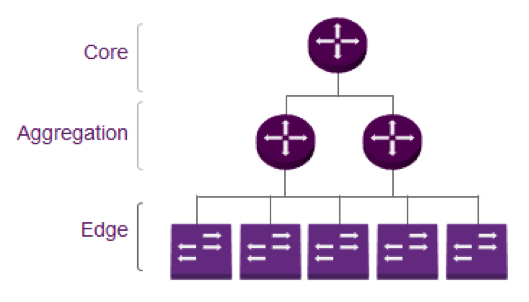White Paper: Building a Multiformat Truck
Standards-based IP, distributed architecture promise flexibility, scalability
Story Highlights
Broadcasters and content creators are scrambling to implement systems that produce live content with the newest technological advances beyond HD, including 1080p/60 and 4K (UHDTV1). In addition, particularly in live sports programming, producers are deploying more high-frame-rate (HFR) sources to focus on the action and highlight the drama. The ability to draw the audience into the emotion of a moment in sports, such as a frown from a player or coach, has increased demand for HFR-capture and -replay devices.
As format-development time continues to shorten, the task of keeping a production facility up-to-date has become increasingly difficult. Never before have so many new signal types created such difficulty in managing signal paths, maintaining configuration of user interfaces and control systems, and creating the new infrastructures required to handle them.
With this accelerated rate of change, outside-broadcasting (OB) truck providers aren’t always able to achieve a return on investment if choosing only one production format. Today, operators are looking for a way to be agile enough to accommodate multiple formats with one facility (or truck). The industry needs an approach that protects investments by using technologies that enable flexibility and scalability.
IP for Broadcast
Using standards-based IP interconnects and an accompanying distributed architecture is a technological solution to a very real business problem: the ability to react to the changing requirements of the production marketplace. A distributed architecture similar to the core/aggregation/edge approach pioneered by IT data centers allows straightforward expansion and augmentation of broadcast facilities. This type of implementation meets the needs of today and tomorrow using well-tested and proven methodologies.
Today’s 10 Gigabit Ethernet (10GigE) IP technology provides the bandwidth required for a broadcast interconnect and allows a common physical interconnect to provide transport for a varied array of data-stream types. Previous technologies have attempted to accomplish this in a serial topology, but IP offers a much more extensible solution for meeting the needs of the future. The IT industry demonstrated the superior potential for migrations and augmentations as the Ethernet market progressed from 10 Mb to 100 Mb to 1 Gb to 10 Gb. Via a standard encapsulation, such as RFC 4175, the medium and the stream can be decoupled and either simultaneously or separately transitioned to the next capability.
Standards-based IP makes this approach valuable beyond 10 Gb. The economies of the individual interfaces continue to improve, and certainly 10GigE is not the end of the road.
Common IT approaches to aggregation allow easy interconnection of zones with varying physical-network speeds and incremental improvement and upgrade as required. As broadcasting moves toward 2160p/120 or 8K, the same recommended system design can continue to scale as higher-speed interfaces become available.
The broadcast industry can help itself by quickly adopting a common standard to use as a long-term, IP-based replacement for the longstanding video interface, SDI.
ROI/Flexibility
Any implementation developed today should provide the flexibility for all contributors in the production chain — acquisition (cameras), graphics, replay operations, switching and effects, audio, processing, transmission — to easily join streams, combine components of streams, and provide those streams back into the system with efficiency. In addition, the signal format should not be tied to a physical wire.
In today’s production market, particularly in OB trucks, the potential for building a system that allows easy reconfiguration and deployment of HD/1080p/4K or HFR sources is attractive. Being able to pull a truck up to an event and have an infrastructure capable of supporting any format through software configuration, without moving any interconnects, could mean the difference between capitalizing on a mobile asset and losing out on revenue because of the time required for reconfiguration.
Customers do not want dedicated wiring based on the type of traffic. In addition, some devices that provide, produce, or manipulate live video streams in a production environment no longer rely on a dedicated “video” interface but instead use only standard 10GigE. Many believe that future IP infrastructures can and should accommodate a mixture of traffic via Quality of Service (QoS).
Using standard methods of encapsulation — such as RFC 4175 for RTP — and allowing multiple raster formats, frame rates, and more to be carried in the same way enables the concept of one wire for all signals. The promise of a single physical-interface type for 4K/UHD or for HFR HD/3G content is at hand. Use of standard methods of transport allowing easy separation of video, audio, and metadata means that the needs of all potential users of these streams can be met.
Distributed Architecture
Data centers pioneered the distributed-IP-architecture model, creating a topology that enables groups of processing devices or servers to be managed through a top-of-rack switch. Switches are then aggregated to provide system-wide access across the enterprise.
Using such a model for OB trucks — particularly trucks with multiformat requirements — can provide many of the same benefits: scalability, options for redundancy, ease of migration, or addition of future services or capabilities. Furthermore, in many cases, leveraging commercial, off-the-shelf IP switching for the core and aggregation layers of a distributed broadcast IP fabric, broadcast-centric devices can concentrate innovation at the edge to address specific I/O and processing requirements.
In the past, some in broadcast have been reluctant to use common IT interfaces for real-time video interconnects and/or transmission. IT and IP technologies are widespread across many industries that require reliability as high as or higher than broadcast. Such technologies as virtual-router redundancy protocol (VRRP), virtual routing and forwarding (VRF), and intelligent resilient framework (IRF) provide highly reliable systems, as well as highly sophisticated system architectures resulting from years of development. These technologies also can be leveraged once broadcast adopts IP as a core technology.
A Cautionary Tale
Until the mid 1800s, locomotives were a novelty item, impractical given the low-cost alternative of waterway travel and shipping by packet boat. Initially, trains were used for short-distance passenger travel and were a luxury experience.
The rail line was often built long before an engine and train were obtained. By 1860, seven track gauges were in common use — and a bone of contention — in the U.S. In the Erie Gauge War, miles of track were destroyed, bridges were burned, one man was shot, and several more were beaten. Ringleaders were sent to prison, and fines and penalties were imposed as the citizens of Erie, PA, fought to protect their lucrative business of transferring goods and people who were forced to stop in Erie by the change in railroad gauge.
In 1862, Congress specified the rail gauge for the transcontinental railroad, but it took almost 30 years for it to be adopted across the country. As the rails were standardized, locomotives became a major force in transporting people and goods of all classes and became pivotal in the nation’s westward expansion.
No one wants to be remembered as the last holdout in the move to an interoperable, IP-connected video environment. The migration to IP as a replacement for SDI has started across the broadcast industry. The notion of requiring conversion across competing solutions is a speed bump in the way of progress. The consequences for delays in development of a clear standard are not as dire as they were during the birth of the U.S. railroad, but they certainly threaten broadcasting’s ability to stay competitive with the growing number of options available for consumers.
The Benefit to Broadcasting
IP-based connectivity, when combined with extensible protocols, allows fast implementation of new signal types without changing the transmission mechanism. With continuous innovation from broadcast manufacturers, additional functionality — such as low latency, programmable processing, and vertically accurate switching — can be added to the scalability, flexibility, and fault tolerance afforded by this new IP core. By embracing open standards, the industry can be assured of a common, ubiquitous set of protocols for broadcast and media companies transitioning from SDI to IP. When combined with a distributed architecture, production facilities are easily extended to meet the fast-changing requirements of today’s broadcast production.
In addition to benefits in the market overall, the ability for a single system (or truck) to accommodate multiple production types, with practically no downtime beyond a software reconfiguration, would provide broadcasters with two major advantages: enhanced revenue-generating capabilities from taking on additional jobs and reduced operational costs from not having to change over a system.
The demand to deploy a multiformat, flexible OB truck is upon us. A standards-based IP interconnected infrastructure using a distributed architecture can pave the way to meeting that requirement and allowing those formats to come as the industry continues to progress.


